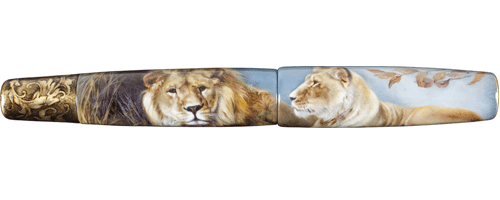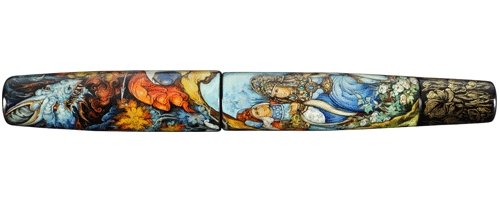Techniques
FEDOSKINO
The Fedoskino school works with oil paint and lacquer. Oil paint is a mixture of pigments based on a vegetable oil, usually linseed oil. In the 15th century, oil paint became an important medium for artwork. It is claimed that Jan Van Eyck (1390-1441) made this important discovery. In fact, he was the first artist who made his name with oil paint. Others claim that Jan van Brugge was the father of oil paint.
Oil paint has a long drying time. As a result, a painting can be worked for several days, and colour transitions can be adapted and errors can be corrected. Oil paint affords greater possibilities for enhanced transparency and coverage, and it gives the artist scope to apply a wide variety of styles, including very realistic representations. Many artists of the Russian Lacquer Art tradition are familiar with the tried-and-tested painting techniques of the 16th and 17th centuries and apply them with gusto. And some pens simply make you feel like you're in an endless museum.

PALEKH
The Palekh school works with tempera paint, gold leaf and lacquer. Tempera is a type of paint made from egg yolk mixed with pigments. The first recipe for tempera based on egg yolk was printed by Cennino Cennini in 1390. Tempera was mainly used to illuminate paintings and manuscripts. And to this day artists still use tempera in iconography. Paintings executed with tempera can last for centuries.
Tempera normally has a matte finish and only later takes on its brilliance thanks to the addition of a layer of wax or varnish. Tempera dries quickly, and the final rich colour palette is the result of light. The artist must decide in advance on the composition of the picture. Spontaneous painting with tempera paint offers fewer possibilities. Tempera does not allow the artist to make any corrections; once the paint is dry, nothing can be changed, although fine line shading of different colours can be interwoven to obtain colour transitions, for example to effect the transition from dark to light. Painting with tempera is very labour-intensive.

ICONOGRAPHY
The Phoenix Lacquer Art range features pens inspired by iconographic art. Tempera, gold leaf and varnish are applied to these exquisite writing instruments. The images on these pens are endowed with a certain sacredness. They are characterised by lightness of composition and rich colours. Europeans may not at first glance perceive the intrinsic beauty of these works of art, but you should not be fooled by the cultural difference: iconography offers something very special.
![]()